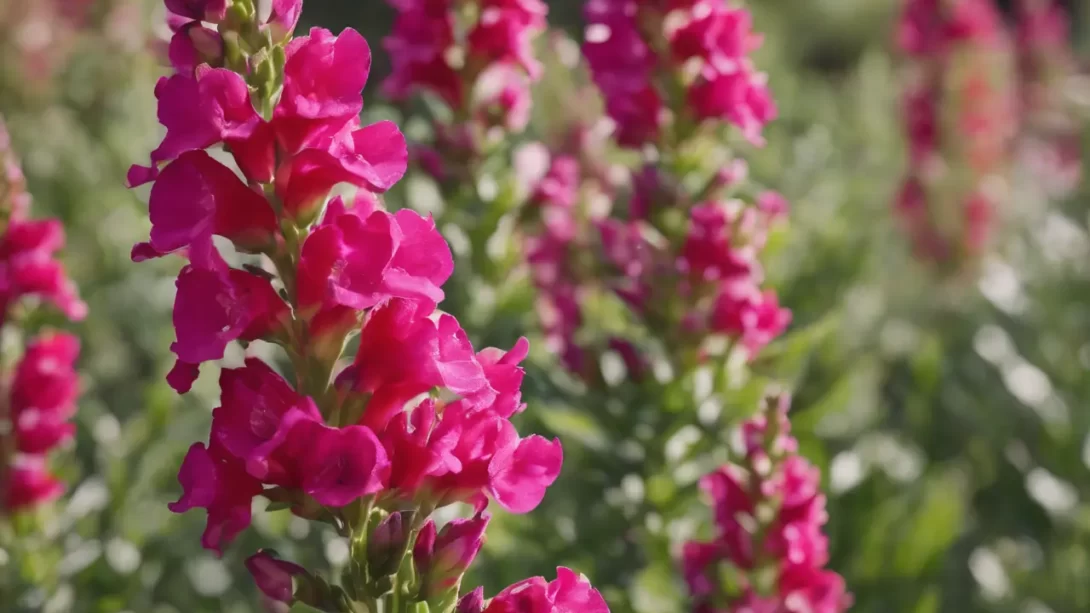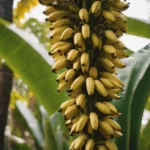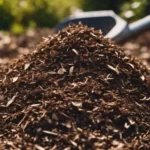Snapdragons, with their vibrant and distinctive blooms, add a burst of color to gardens, making them a favorite among gardeners. To maintain the beauty and encourage prolonged blooming, certain practices become essential. One such practice is deadheading, a gardening technique that plays a pivotal role in enhancing the vitality and visual appeal of snapdragons. In this exploration, we delve into the art of deadheading snapdragons, uncovering the benefits and techniques that contribute to the overall health and aesthetic allure of these charming flowers.
- Drop forged body and handles.
- Quality blade made of Premium Titanium steel with Ultra-fine Polishing Technology.
- Ergonomically designed non-slip handles are strong,lightweight,and comfortable.
- Sap groove design to help keep pruning shears from sticking by channeling off sap.
- Pruners can cut up to 3/4″ diameter size tree branches.This may vary depending on tree species.
What is Deadheading?
Deadheading is a horticultural term that refers to the removal of spent or faded flowers from a plant. In the case of snapdragons, this involves snipping off the blossoms that have completed their blooming cycle. The primary purpose of deadheading is to redirect the plant’s energy from seed production towards new growth and continuous blooming. By eliminating spent flowers, the plant can channel its resources into producing more buds, leading to a prolonged and visually stunning display of blossoms. Deadheading is a simple yet effective practice that not only enhances the appearance of the plant but also encourages a healthier and more vigorous blooming season.
Benefits of Deadheading Snapdragons
Deadheading snapdragons yields several notable advantages, contributing to the overall well-being and aesthetic appeal of these vibrant flowers:
- Enhancing Aesthetic Appeal: By removing spent blooms, deadheading promotes a neater and more visually pleasing appearance in the garden. The elimination of withered flowers prevents the plant from looking unkempt and maintains a tidy, manicured look.
- Encouraging More Flowers: One of the primary benefits of deadheading is the redirection of the plant’s energy. Instead of channeling resources into seed production, the snapdragon focuses on producing new flower buds. This results in a continuous blooming cycle, ensuring a profusion of fresh, colorful blossoms.
When to Deadhead Snapdragons
Knowing the right time to deadhead snapdragons is essential for maximizing the benefits of this practice:
- Regular Deadheading: Engage in regular deadheading throughout the blooming season. As individual flowers fade, promptly remove them to stimulate the growth of new buds.
- Late Spring to Early Fall: Deadheading is particularly effective during the snapdragon’s peak blooming period, which typically spans from late spring to early fall. Consistent deadheading during this timeframe encourages a prolonged and robust flowering display.
How to Deadhead Snapdragons
Deadheading snapdragons is a straightforward process that, when done correctly, contributes to the health and continuous blooming of the plants:
- Inspecting the Plant: Regularly check snapdragon plants for spent or fading flowers. Focus on blossoms that have lost their vibrancy and are starting to wilt.
- Use Clean, Sharp Tools: Employ clean and sharp pruning shears or scissors for the deadheading process. This helps prevent damage to the remaining parts of the plant.
- Snipping the Stem: Position the cutting tool just above a set of healthy leaves or buds and snip the stem of the spent flower. This encourages new growth from the leaf axil.
- Dispose of Removed Flowers: Collect and dispose of the removed flowers to prevent any diseases or pests from lingering around the garden.
Common Mistakes to Avoid
While deadheading is a relatively simple practice, certain mistakes can compromise its effectiveness:
- Incomplete Removal: Ensure that the entire faded flower is removed, including any developing seedpods. Incomplete deadheading may hinder the plant’s ability to redirect energy.
- Late Deadheading: Promptly deadhead spent blossoms to prevent seed formation. If left too late, the plant may invest energy into seed production, diminishing the impact of deadheading.
- Overlooking Diseased Flowers: Avoid deadheading diseased or pest-infested flowers without proper precautions. Dispose of these flowers separately to prevent the spread of issues to healthy parts of the plant.
Alternatives to Deadheading
While deadheading is an effective method for promoting continuous blooming in snapdragons, there are alternative practices and considerations for gardeners:
- Companion Planting: Introduce companion plants that naturally complement snapdragons and extend the overall blooming period. Selecting flowers with staggered blooming schedules can create a dynamic and prolonged display.
- Fertilization: Implement a well-balanced fertilization regimen to provide essential nutrients for snapdragons. A nutrient-rich soil encourages healthy growth and may contribute to prolonged blooming.
- Pruning for Shape: Regular pruning to maintain the shape and structure of the snapdragon plant can indirectly encourage new growth and enhance its overall appearance.
Conclusion
In conclusion, the practice of deadheading snapdragons emerges as a valuable tool for gardeners seeking to prolong the blooming season and maintain the visual allure of these captivating flowers. By understanding the benefits of deadheading, recognizing the optimal timing, and mastering the proper techniques, gardeners can foster healthier, more robust snapdragon plants.
However, deadheading is not the sole method for achieving a vibrant garden display. Alternatives such as companion planting, fertilization, and strategic pruning offer additional avenues for gardeners to explore. Whether choosing to deadhead or employ alternative practices, the goal remains the same – to cultivate a garden that is not only visually stunning but also brimming with the vitality of flourishing snapdragons. Ultimately, the art of gardening is a nuanced blend of techniques, and selecting the right approach depends on the preferences and goals of the gardener.






